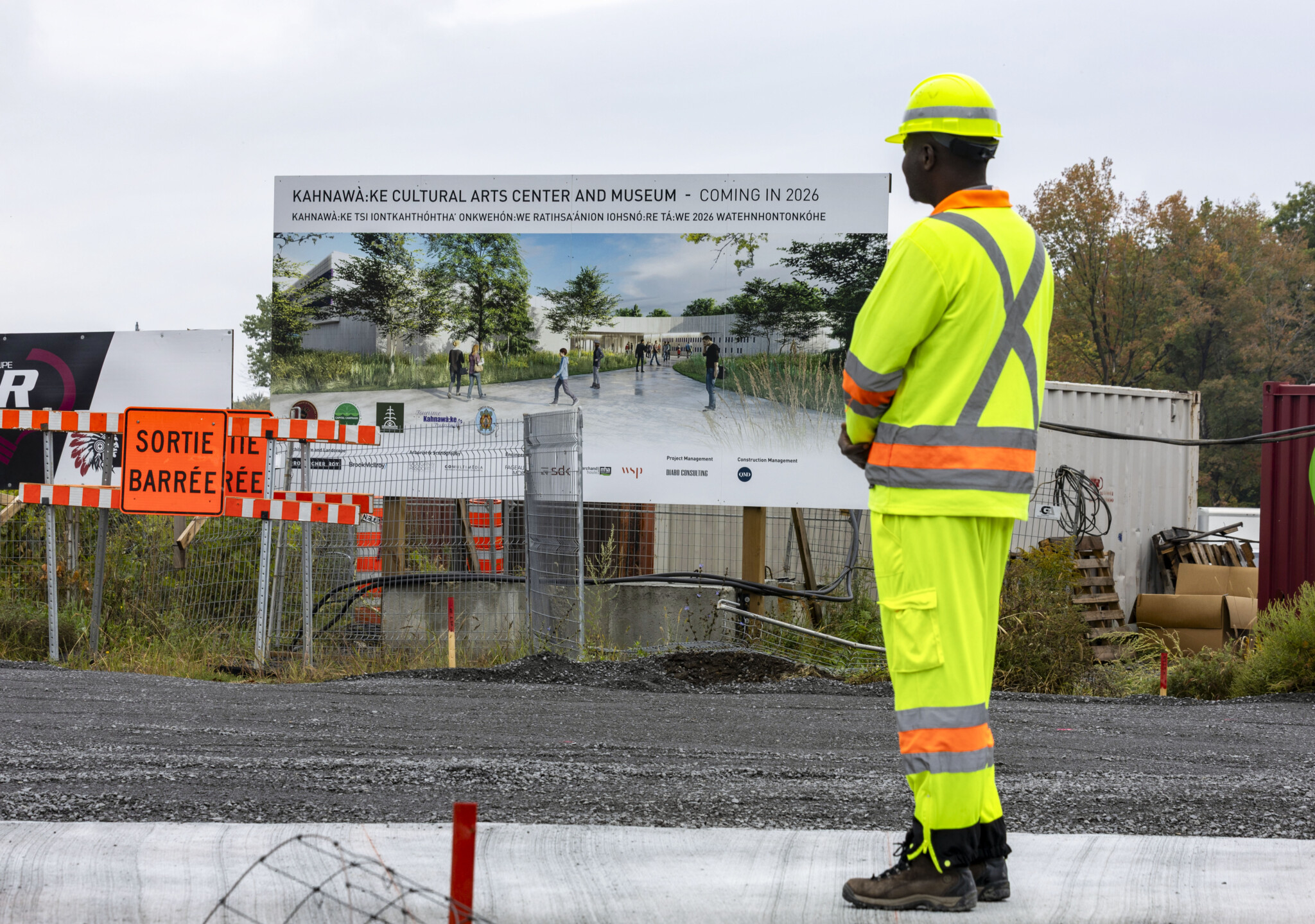The Hub’s third annual Hunter Prize for Public Policy, generously supported by the Hunter Family Foundation, focused on solving Canada’s stagnant living standards and slow productivity growth. A diverse group of ten finalists has been chosen from nearly 250 entries, with the finalists and winners chosen by an esteemed panel of judges, including Theo Argitis, Hon. Lisa Raitt, Frances Donald, Jack Mintz, and Alicia Planincic. The Hub is pleased to run essays from each finalist this week that lay out their plans to help solve this persistent policy problem. The Hunter Prize is made possible thanks to the support of the Centre for Civic Engagement.
Canada’s economy is at a critical point. For nearly a decade, GDP per capita—a key measure of how much wealth each person generates—has barely grown. Canadians are working harder and longer, yet their wages are flat, and living standards are slipping. At the same time, housing, food, and energy costs keep climbing.
The root problem is productivity. We are not getting enough economic output from the work we do or the investments we make. Our infrastructure is aging, our digital systems lag other countries, and our communities lack the resources to try new ideas. Without change, Canada risks leaving the next generation with fewer opportunities.
The municipal bottleneck
The key to fixing this lies closer to home than many realize: municipalities. Cities, towns, regional districts, and Indigenous governments manage the infrastructure that shapes our daily lives, from transit, broadband, utilities, and public buildings.
They are also where new ideas are tested first: digital permitting platforms that cut red tape, smart energy systems that lower costs, or civic innovation hubs that nurture entrepreneurs. But here’s the challenge: municipalities only control about 10 percent of government revenues. They rely heavily on property taxes and unpredictable transfers. This leaves them unable to scale transformative projects, even when the long-term payoff is clear.
The result is a cycle of underinvestment. Smaller communities, especially rural and Indigenous ones, are often shut out of capital markets altogether. Projects that could raise Canada’s competitiveness and quality of life stay stuck on the drawing board.
View reader comments (0)
A new financing tool
That’s where digital and innovation bonds (DIBs) come in.
DIBs are federally enabled, tax-incentivized bonds that municipalities, regional districts, Indigenous governments, and utilities can use to finance future-ready projects, such as:
- broadband expansion,
- smart grids and energy-efficient public buildings,
- modernized transit,
- innovation hubs and cultural-technology centres.
Here’s how it works. A municipality issues a bond to raise money for a project. Investors—from pension funds and banks to local residents through smaller “community bond” tranches—buy in. The money funds the project upfront, so communities can build now instead of waiting years for grants.
Investors then receive a steady base return, funded by the sponsor’s budget or project savings, like lower utility bills or reduced maintenance costs. If a project succeeds by cutting emissions, improving services, or creating jobs, the outcomes are carefully checked and confirmed by independent experts. Once this verification is complete, Ottawa provides a bonus payment through the Productivity and Innovation Fund, which gives investors more than their base return.
Municipalities repay their share over time as they would with traditional borrowing, while Ottawa only pays out when the public sees results.
For investors, DIBs combine the stability of government-backed bonds with the upside of impact investing. For communities, they finance critical projects without raising taxes. And for taxpayers, federal dollars only go toward verified success.
Examples Canadians can picture
Urban example: A mid-sized city wants to convert an old warehouse into a cultural-tech hub for entrepreneurs, artists, and students. Normally, it couldn’t afford such a project. With a DIB, it raises $20 million from investors. The city repays a base return through new rental revenues and lower costs. If the hub creates jobs and trains youth, evaluators verify success, triggering Ottawa’s performance bonus. The result: a vibrant hub, new opportunities, and taxpayers only pay once the benefits are real.
Rural example: A small town or electoral area wants a multi-purpose community centre that doubles as cold storage for farmers and an agri-tech training hub for youth. The cold storage reduces waste and supports farm-to-school and backpack food programs. With a DIB, the town raises $10 million. Modest fees and storage savings repay investors’ base return. If outcomes like reduced food waste and youth training are achieved, Ottawa adds the performance bonus. The town gains storage, skills, and better nutrition without higher taxes.
Scaling the impact
If issued at scale, DIBs could raise $2–3 billion annually, with federal tax incentives costing just $50 million per year—far less than traditional grants or subsidies. The payoff would be significant: a 0.2–0.5 percent boost in GDP per capita, or roughly $3–7 billion in new national income each year. In other words, a modest federal investment could unlock transformative, measurable growth across the country.
Built on Canadian success stories
Skeptics may ask: Can this really work here? The answer is yes.
- The City of Toronto’s Social Debenture Program has raised over $650 million since 2020 for housing and transit, each issuance oversubscribed by investors eager for social outcomes.
- The Centre for Social Innovation (CSI) pioneered the Community Bond, raising millions from everyday Canadians to finance hubs in Toronto. These bonds proved that residents will invest in their communities when given a trusted, transparent vehicle.
DIBs would scale these successes nationally, combining federal credibility with local creativity.
Why it works for everyone
The beauty of DIBs is that they appeal across the spectrum:
- Fiscal conservatives value the market-based structure, modest federal cost, and accountability.
- Progressives welcome the green retrofits, social infrastructure, and inclusion.
- Municipal leaders gain autonomy to drive solutions.
- Indigenous governments get direct access to capital for self-determined projects.
- Investors gain a safe, impact-driven asset class.
Few policies can build this kind of coalition.
Why now
Canada cannot afford another decade of stagnation. Without stronger productivity and innovation, wages will flatline, competitiveness will erode, and young Canadians will face shrinking opportunities. DIBs meet the moment. They are rooted in Canadian precedents, fiscally prudent, and outcome-driven. Most importantly, they empower communities to invest in their own future.
A new era of future-ready communities
Imagine a Canada where every town can modernize its services, retrofit public buildings, expand connectivity, and build spaces for innovation. Imagine Indigenous governments leading projects that reflect their own priorities. Imagine rural communities no longer shut out of capital markets but driving their own futures. That is the opportunity of DIBs. It’s time to give Canada’s municipalities the financing tools they need to unlock growth, drive innovation, and restore rising living standards.
Read the policy paper:
Could Digital and Innovation Bonds (DIBs) truly empower municipalities to drive Canada's economic growth, or are there inherent limitations?
What are the primary benefits of DIBs for investors, and how do they differ from traditional investments?
How might the proposed DIB model address the underinvestment in rural and Indigenous communities, and what are the potential implications?












Comments (0)